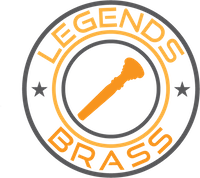Revised June 10, 2021 (original blog post May 4, 2018)
Over the course of his extensive career, Maynard Ferguson experimented with different mouthpieces and trumpets. He worked with several mouthpiece makers to create different iterations of his mouthpieces. They usually had similar rims and cups, but occasionally he went in a completely new direction. Below is an overview of the evolution of his equipment over time, and similar pieces available at Legends Brass.
May 4, 1928: Walter Maynard Ferguson was born in Verdun, Quebec, Canada. Although he started with violin and piano, he began playing trumpet at age 9. At age 13, he had a solo with the Canadian Broadcasting Corporation Orchestra, and at age 14 he earned a scholarship to the Conservatoire de musique du Quebec a Montreal. The child prodigy was on his way to becoming known as one of the most gifted trumpeters of all time.
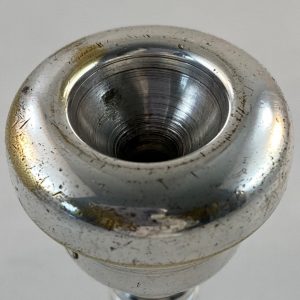
1939-1941 while living in Canada: Rudy Muck 13C created by Rudy Muck. Maynard is said to have sanded down the rim on this mouthpiece to make better use of the V portion of the cup. John DiStaldo is said to have also created a mouthpiece for him around this time which had a concave V cup. Maynard was using a large bore Selmer, extra-large bore Bach (1952-53), a Martin Committee Model, and a Calicchio trumpet during these years.
1948-1955: Maynard moved to the U.S. and played with bands led by Boyd Raeburn, Jimmy Dorsey and Charlie Barnet. In 1950 he joined Stan Kenton’s Orchestra. From 1953-1956 he was a sessions player for Paramount Pictures in Hollywood, CA. In 1955 he was playing a Martin Committee Model trumpet.
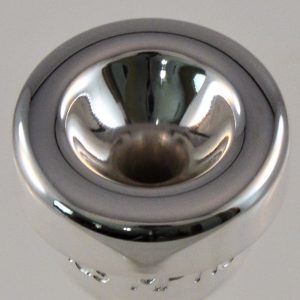
1955 in Los Angeles: Custom mouthpiece created by Dominick Calicchio. This mouthpiece had a round inside rim with a diameter of around .623” (but hard to measure accurately due to the roundness). Built on the concept of the modified Rudy Muck 13C, it had a shallow concave V cup (also called a V bowl) and a #26 throat. This mouthpiece was eventually nicknamed “The Holy Grail”. It has been reproduced by more than one company and sold under names such as “Groovin High” and others. Maynard was using a Conn Constellation 38B trumpet (.438 bore) during this time. Recordings during this period include: “Boy with Lots of Brass”, and “Birdland Dream Band” Vol. 1&2. Legends Brass similar pieces: MF HG and Funkin Groovin.
1956: Maynard became leader of the Birdland Dream Band
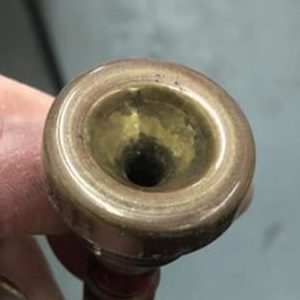
1963-1969 in New York and India: Giardinelli MF1 created by Robert Giardinelli and machinist Jack Onque. This mouthpiece had the same rounded inside rim, but the inside diameter was smaller at about .590”. The cup was closer to a straight V shape (but still a V-bowl) and was slightly deeper than the Calicchio mouthpiece. The throat was still a #26. Maynard used this mouthpiece during his years in New York with the Birdland Dream Band, and during his years in India (1967-1969). He was still using his Conn Constellation 38B (.438 bore) trumpet. Recordings during this period included: “Maynard ‘63” and “The Maynard Ferguson Sextet”. Legends Brass similar piece: GIR MF1
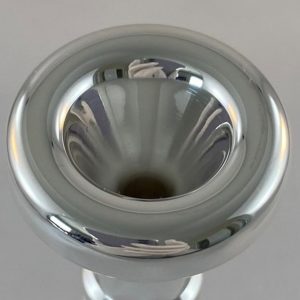
1969-1973 in London, England: FBL mouthpieces created by Jack Bell. These mouthpieces all had the same rounded rim shape, with an inside diameter of .613”. The cup shape was a straight V with a #26 throat. There were three cup depths: FBL TS (or FBL personal), which was shallow, FBL TM (medium depth), and FBL TD (deepest depth). He may have used these interchangeably as needed to get the best sound with that day’s chops. At this time Maynard was using his Liberator trumpet (.462 bore). Recordings during this time included: “M.F. Horn”, “M.F. Horn 2”, and “M.F. Horn 3” including the songs “MacArthur Park”, “Give It One”, and “Hey Jude”. Legends Brass similar pieces: MF FBL TS, MF FBL TM, and MF FBL TD.
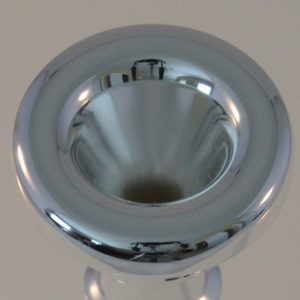
1973 in Ojai, California: Holton MF1, MF3 and MF6. These were the next variation of Maynard’s mouthpieces, but were still similar in many ways to the Giardinelli MF1 and FBL series. The inside rim was still very round (and difficult to measure accurately) but the inside diameter was a little smaller at about .590”. The cup was now a slightly convex V shape. The MF1 stayed with a #26 throat, but the MF6 had a much larger #19 throat. The MF1 and MF6 had a shallow cup similar in depth to the FBL TS (Personal), but the difference in throat size creates different nuances in cup shape. The MF3, on the other hand, had a slightly wider inside diameter and a cup depth similar to the FBL TM. Maynard was using the Holton ST301 (.468 bore) and ST 302 (.468 bore) trumpets during this time. Recordings during this time include “M.F. Horn 4 & 5: Live at Jimmy’s” and “Chameleon”. Legends Brass similar pieces: MF1 and MF6.
Below is an overlay of scans showing cross sections of the Giardinelli MF1, and FBL TM, and the Holton MF6. These were created and posted by Mark Curry on Trumpet Herald trumpet forum website (www.trumpetherald.com). The FBL TM and the Holton MF6 have almost identical cup shapes, while the Giardinelli MF1 is more shallow. Click the link below to get even more details about the comparison between these three mouthpieces.
https://www.trumpetherald.com/forum/viewtopic.php?p=1142786
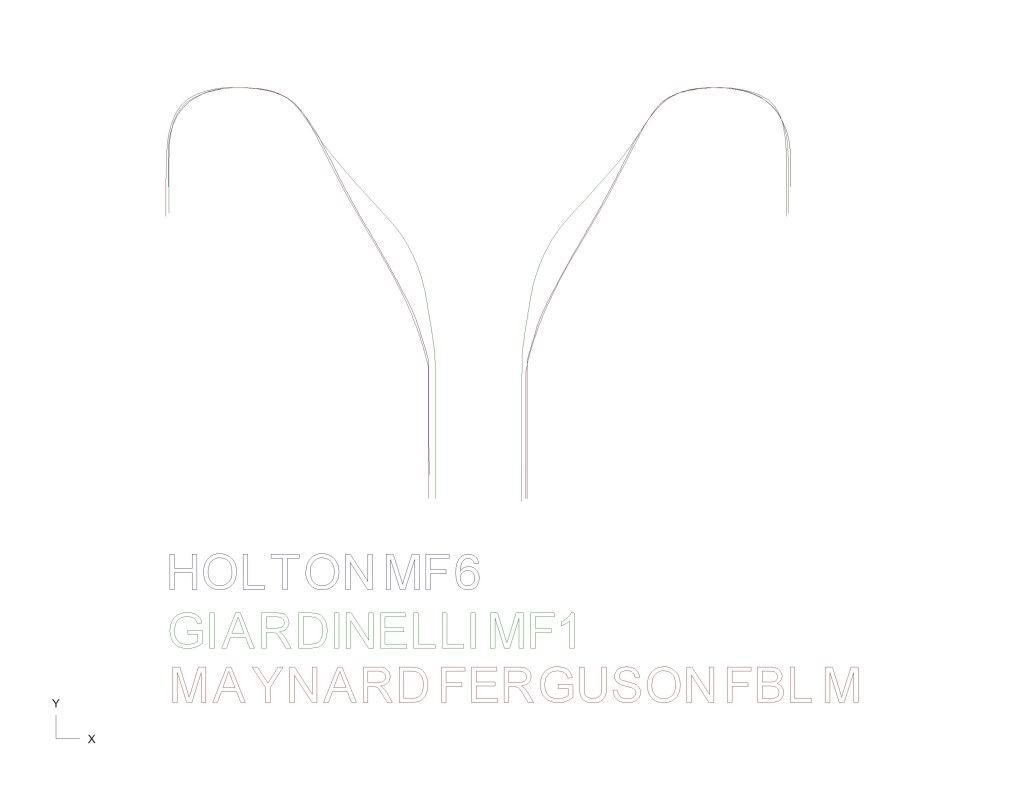

1970’s – 1980’s in Ojai, California: Jet-Tone MF Personal, M.F. #2, and M.F. #3 created by Bill Ratzenberger at Jet-Tone. The MF Personal had an inside diameter of .593”, shallow convex V cup, and #19 throat. The M.F. #2 had an inside diameter of .625”, slightly deeper convex V cup, and #24 throat. The M.F. #3 had a .656” inside diameter, convex V cup about the same depth as the #2, and a #26 throat. Maynard was playing a .468 bore Holton trumpet during this time. Albums during this time included “Primal Scream” with the song “Pagliacci”, “Conquistador” with the song “Gonna Fly Now (Theme from Rocky)”, “Carnival” including “Birdland”, “Stella by Starlight”, and “Theme from Battlestar Galactica”, and the album “New Vintage” including “Star Wars” and “Airegin”. Legends Brass similar pieces: JT MF, JT MF Master, JT MF2, JT MF3.
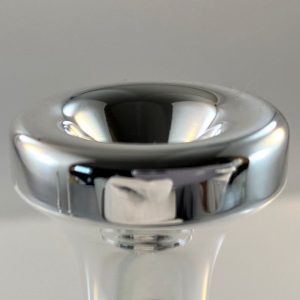
1986-1990 in Ojai, California: Schilke MF1 and MF2 made by Scott Laskey at Schilke. They were copied from his Jet-Tone mouthpieces, with some modifications. The MF1 had more of a bowl shaped or double cup, and the MF2 was very similar to the Jet Tone personal model. The throat was very open and could have been a #24 or #19. Maynard was still using a Holton ST 302 (.468 bore) or ST 306 (.468 bore) trumpet at this time. Recordings included: “High Voltage Vol. 1”, “High Voltage Vol. 2”, and “Big Bop Nouveau”. Legends Brass similar pieces: S MF.
1986: Maynard formed the High Voltage Septet
1988: Maynard formed Big Bop Nouveau
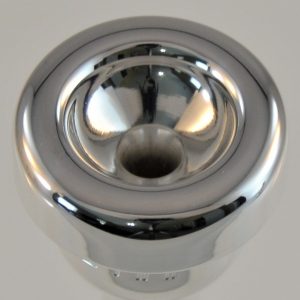
1992 – 2006 in Ojai, California: Monette MFII and MFIII made by Dave Monette. This was a major change in trumpet mouthpiece specs for Maynard. The MFII has an inside diameter of .636” a medium shallow to shallow bowl shaped cup, and #16 throat. The MFIII has slightly wider inside rim diameter, slightly more bite to the rim, and Monette’s “SLAP” cup. Maynard by this time also used a Monette trumpet (.464 bore). Recordings during this time include “One More Trip to Birdland”, “Brass Attitude”, and “M.F. Horn VI: Live at Ronnie’s”. Legends Brass similar pieces: L-MFII and L-MFIII.
Throughout the evolution of his mouthpieces, Maynard favored a flat rim with a rounded contour on the inside and outside edges. The inside diameter was often hard to quantify because of the roundness, but was always small, between .590”-.636”. The cup shape was a concave V (or V bowl) early on, moved to a straight V with the Giardinelli and FBL mouthpieces, was a slightly convex V with the Holtons, and eventually a more pronounced convex V shape with the Jet-Tones. He favored a larger-than-stock throat size. It ranged from #26 – #19 or even larger. With the Monette mouthpieces he went in a new direction with a different cup shape and larger inside diameter. Over the course of his career he never stopped adapting, changing, and trying new ideas. His talent transcended his equipment, and his music is still just as powerful and exciting and compelling today as it was during his lifetime. Happy Birthday Maynard!
Sources:
·https://maynardferguson.com/biography/ . Retrieved from maynardferguson.com on 4/20/2020.
·https://en.wikipedia.org/wiki/Maynard_Ferguson . Retrieved 4/30/2020.
·https://www.trumpetherald.com/forum/viewtopic.php?p=1142786 . Retrieved from trumpetherald.com 5/4/2020.
*Author’s Note: It’s often really hard to pin down exact specs on a particular mouthpiece. Handmade mouthpieces have considerable variation. Sometimes (usually) Maynard had personal pieces with specs different from the stock pieces sold under his name. The curved nature of the rim makes it difficult to measure accurately. The above information was gathered from internet sources and online forums and may not be scientifically exact. I’ve been as accurate as possible. Feel free to add to this list and offer corrections in the comments.

